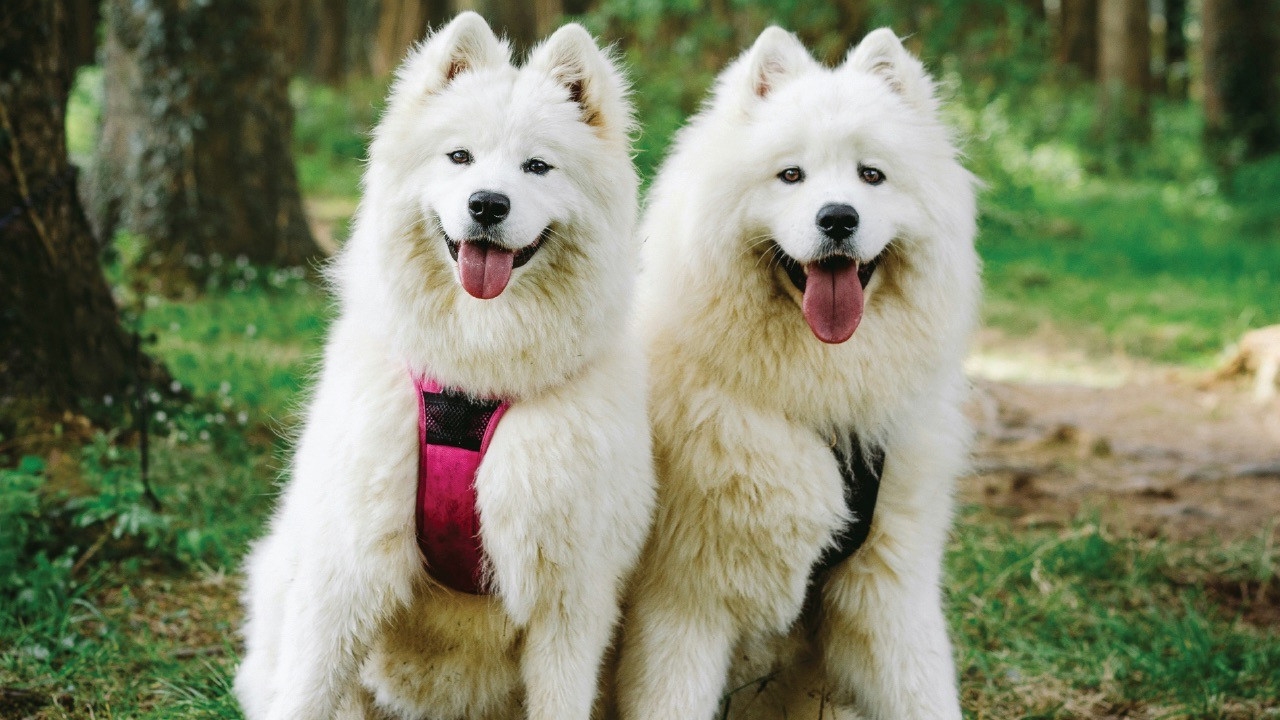Harnesses are a popular choice over collars for various reasons. They provide a safe and comfortable way to control your dog during walks without putting pressure on their neck. Unlike traditional collars, which can cause choking if your dog pulls, a harness distributes the force across the chest, minimising the risk of injury. Whether you’re introducing a harness to a puppy or an adult dog, this guide will help you choose and fit the right one for your furry friend.
What Makes the Best Harness for Your Dog?
Dogs come in many shapes and sizes, so the best harness for your dog will depend on their breed, size, and needs. Consider these key questions when selecting a harness:
- Is it adjustable, allowing for a comfortable fit?
- Is the material soft enough for comfort but durable enough to withstand wear or chewing?
- Do you prefer a front-clip or back-clip harness?
- Are you looking for a training harness or a general walking harness?
- Does the harness have an additional function, such as securing your dog in the car?
Once you’ve answered these questions, you can start your search. Whether you're after a specialised harness, such as one for car travel, or a general walking harness, always measure your dog before purchasing. Harnesses are often categorised by breed, size, or weight.
To ensure the perfect fit, take the following measurements:
- Chest: Measure around your dog’s body, starting at the base of the rib cage, going over their back, and meeting where you started.
- Neck: Measure around the thickest part of your dog’s neck. Avoid measuring where a collar typically sits, as this area is narrower.
- Weight: Many harnesses are size-specific based on weight. Choosing the correct weight range is essential to avoid breakage.
Pro tip: If your dog is between sizes, opt for the larger one. Most harnesses have adjustable straps that allow for a more custom fit.
How to Put on a Dog Harness
While the straps and buckles may seem confusing at first, fitting a harness is straightforward once you get the hang of it. The two most common styles of harnesses are overhead and step-in.
Overhead Harness This type features loops around the ribs and neck, with a D-ring on the back for leash attachment. To fit an overhead harness:
- Slide the harness over your dog’s head.
- Pull the chest piece up so it sits against their chest and belly.
- Fasten the buckles behind your dog’s front legs.
- Adjust the straps around the neck, sides, and belly for a snug fit.
Step-In Harness For this style, lay the harness on the floor with the buckles facing up:
- Place your dog’s front paws into the two triangles.
- Pick up the ends of the harness and fasten them together.
- Ensure the harness fits tightly enough that your dog can’t escape.
Regardless of the type of harness, it’s always best to follow the instructions provided by the manufacturer for the best fit.
Signs of an Improperly Fitted Harness
An ill-fitting harness can cause discomfort and even pose safety risks. If a harness is too tight, it may restrict your dog’s movement, while a loose harness can allow your dog to slip out. Keep an eye out for these signs:
- Fur loss or chafing around the harness area.
- Your dog can easily escape the harness.
- The harness rotates or moves excessively on your dog’s back.
- Your dog shows reluctance to walk or seems uncomfortable when the harness is put on.
Helping Your Dog Adjust to a Harness
Whether your dog is a puppy or an adult, introducing them to a harness should be a gradual process to create a positive association. Follow these steps to help your dog get used to wearing a harness:
- Allow your dog to sniff and explore the harness before putting it on.
- Offer treats and praise when they show interest in the harness.
- Once the harness is on, let your dog wear it indoors for short periods to get comfortable.
- Take your dog to their favourite park or play area so they associate the harness with fun activities.
Frequently Asked Questions About Dog Harnesses
- Which is better for a dog, a collar or a harness? A collar is fine for dogs that don’t pull and don’t have respiratory issues. However, harnesses are a better option for dogs that tend to pull on the leash, as they distribute pressure more evenly across the body. Collars can be worn for extended periods, but harnesses are better suited for walks and training.
- When can I start using a harness on a dog? You can introduce a harness at any age, as long as it fits properly. For puppies, it’s best to start using a harness when you begin leash training, usually around eight weeks old. For adult dogs, it’s never too late to make the switch to a harness.
- Why does my dog dislike wearing a harness? Your dog might dislike their harness for several reasons, including:
- The harness may not fit correctly or could be uncomfortable.
- They might dislike the material or how it feels.
- Your dog may have had a negative experience with the harness in the past.
- Some dogs simply don’t like having something placed over their head.
By choosing the right harness and using positive reinforcement, your dog will soon feel comfortable and confident wearing it.
